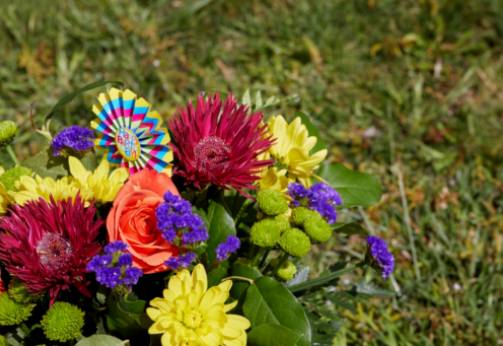Transform Your Garden with Stunning Zinnia Varieties: A Complete Guide
22 December 2025 by Hermione B.Zinnias are vibrant and colorful flowers that can bring life and beauty to any garden. With a wide variety of shapes, sizes, and colors, these stunning blooms are a popular choice for gardeners looking to add a pop of color to their outdoor spaces. In this complete guide, we will explore everything you need to know about zinnias, including how to select the right varieties, plant and care for these beautiful flowers, and incorporate them into your garden design. Whether you are a seasoned gardener or a beginner looking to add some color to your outdoor space, this guide will provide you with all the information you need to transform your garden with stunning zinnia varieties.

Introduction to Zinnias
Zinnias are a beautiful and versatile flower that can add vibrant color and charm to any garden. With their wide range of sizes, shapes, and colors, zinnias can complement any garden design and bring a sense of joy and liveliness to outdoor spaces. Whether you're a seasoned gardener or a novice looking to add some pizzazz to your garden, zinnias are an excellent choice for adding visual interest and beauty to your outdoor space. In this guide, we will explore the different varieties of zinnias, how to care for them, and how to use them to create stunning garden designs.Selecting the Right Zinnia Varieties for Your Garden
When it comes to selecting the right zinnia varieties for your garden, there are a few key factors to consider. First, determine the size of your garden and the amount of space you have available for zinnias. Next, think about the color scheme and overall aesthetic you want to achieve in your garden. Zinnias come in a wide range of colors, including vibrant oranges, reds, pinks, and yellows, so you can easily find varieties that will complement your existing plantings. Additionally, consider the height of the zinnias you want to grow, as they range from compact varieties that are perfect for borders and containers, to tall, showy varieties that make excellent cut flowers. Finally, take into account your climate and the specific growing conditions in your garden to ensure that the zinnia varieties you choose are well-suited to thrive in your environment. By carefully considering these factors, you can select the right zinnia varieties to create a stunning and vibrant garden display.Planting and Caring for Zinnias
Zinnias are relatively easy to grow and care for, making them an ideal choice for both beginner and experienced gardeners. When planting zinnias, it's important to choose a sunny location with well-drained soil. These colorful flowers thrive in full sun and can tolerate a range of soil types, making them versatile additions to any garden. Before planting zinnias, prepare the soil by loosening it and adding organic matter, such as compost or aged manure, to improve its fertility and structure. Once the soil is prepared, zinnia seeds can be sown directly into the ground after the danger of frost has passed. When planting zinnias, space the seeds or seedlings according to the specific variety, as some zinnias require more space to grow than others. Water the newly planted zinnias thoroughly and continue to water them regularly, especially during dry periods, to ensure healthy growth and vibrant blooms. Caring for zinnias involves regular watering, especially during hot, dry weather, and applying a balanced fertilizer every four to six weeks to promote healthy growth and abundant flowers. Deadheading, or removing faded blooms, will also encourage continuous blooming throughout the growing season. Zinnias are relatively low-maintenance and generally do not have many issues with pests or diseases. However, it's important to monitor the plants for signs of common problems, such as powdery mildew or aphids, and take appropriate measures to control them if necessary. Overall, planting and caring for zinnias is a rewarding experience that can provide a stunning display of colorful blooms throughout the summer months. With proper care and maintenance, zinnias can thrive in any garden and bring joy to both the gardener and those who admire their beauty.Tips for Growing Healthy Zinnias
1. Choose the right location: Zinnias thrive in full sun, so be sure to plant them in an area that receives at least 6-8 hours of sunlight per day.2. Prepare the soil: Zinnias prefer well-draining soil with plenty of organic matter. Before planting, amend the soil with compost or aged manure to ensure optimal growing conditions.
3. Watering: Zinnias prefer even moisture, so be sure to water them regularly, especially during dry periods. Avoid overhead watering to prevent the development of foliar diseases.
4. Fertilize: Zinnias are heavy feeders and will benefit from regular fertilization. Use a balanced, water-soluble fertilizer according to the package instructions.
5. Deadheading: To encourage continued blooming, be sure to deadhead spent flowers regularly. This will also help to maintain a tidy appearance in the garden.
6. Support: Some taller zinnia varieties may require staking to prevent the stems from bending or breaking. Be sure to provide support as needed to keep the plants upright.
7. Mulching: Applying a layer of organic mulch around zinnias will help to conserve moisture, suppress weeds, and maintain a more consistent soil temperature. By following these tips, you can ensure that your zinnias will thrive and provide a beautiful and colorful addition to your garden.